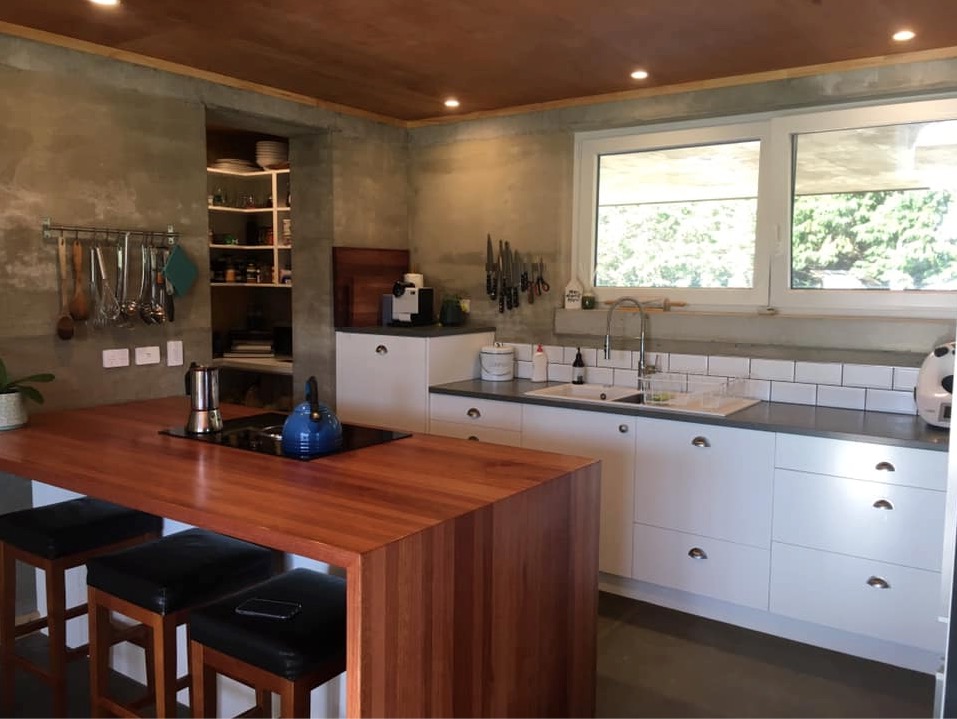Things That Are Surprisingly Good For The Cost (AKA How I want to build my tiny house)
Article Table of Contents
Working title: “My Dream Backyard House/ADU/round-one-of-building-experiment”
I’m trying to build a kinda cool, quirky, sensitive-to-supply-chain-disruption, cheap, functional, emotionally healing home in my back yard. We love to host friends and family, guests, maybe AirBnB sometimes, have extra space for a growing family, etc.
I hope that this document might someday get shared with various persons who are helping us execute on aspects of the plan, or just folks I’ve talked to IRL who want to know some of the books I’ve mentioned to them1.
I’ll probably reference this page when working with the city for permits and approvals, because some of what I do falls outside of the International Building Code, and thus isn’t really on the radars of local municipalities.
Basically, I’ve had A Pattern Language floating around my head for two years, and patterns of home and just a few days ago the last big piece clicked into place in my head - masonry heaters!
I’ve long been interested in earthships, but was always put off by how strange they look, and how much labor they took. You kinda had to commit to the earthship lifestyle. I don’t want that - I want to build a house that my mother-in-law will live in for a long time, and learn some useful skills along the way.
Informing Ideas #
Here’s a list of the concepts I’m working into my plans, and I think could be worked into other plans. Per A Pattern Language I’ve committed to no specific layout, but I’ve got some components of this house I am building.
Rammed Earth Walls #
Rammed Earth is a very old, traditional style of building that can look surprisingly modern.
Building envelopes can be built out of dirt, about 18” thick, in a huge variety of shapes. So, by building a square, or something close to it, one can have an extremely solid, basic structure that stays warm in the winter, cool in the summer, keeps the interior quiet, and is super cheap.
“built out of dirt” is a provocative way to say it, though. Clay and bricks are “mud and water and straw”, and obviously one can build beautiful brick buildings.
Take a look at these rammed earth structures!


They can be built quickly, with surprisingly basic pieces of equipment:

They can be beautiful on the inside. You can also imagine how this could be done so simply:

or another kitchen:

Can you tell I love kitchens?
Masonry Heaters #
I just finished reading Masonry Heaters: Designing, Building, and Living with a Piece of the Sun and think they’re the best.
I could go on and on, and will when I can pull the book notes from there soon.
In the meantime, I’ve checked in on local masonry heater companies, and one could get a small/basic heater installed for <$10k right now. (http://www.greenstoneheat.com/ has offices in Denver, they’ve been great in email back-and-forth)
environmentally healthy, cheap, abundant, pleasant heat for life, even if the power goes out and the sun goes in!
Rammed Earth walls + good use of sun and shade and well-insulating windows + masonry heaters = an absolutely lovely place to live.
Plants & Food #
I love plants. So much. I love so much of the metaphor of gardening, and patient, long-term investment in slowly improving a specific place.
My wife and I are mostly vegetarian, and eat lots of greens and veggies. I
Watch the documentary Fantastic Fungi, and read The Hidden Life of Trees. I could list another ten books, a few more documentaries. I’m not skilled with plants at all, yet, but that will change.
Plants and food grow really well, and are made more resistant to dryness, pests/insects, etc, if they have high-quality compost, which leads to:
Home Composting All Recyclables #
A friend nerd-sniped me with this book and I cannot unread it. Solves a few intresting problems.
passive solar water heater #
I’ve spent a lot of time around the world, solar water heaters are super common. Given how excited I am for a masonry heater, which gets the structure heated (in a beautiful, wonderful way) without needing any gas hookup.
They’re cheap, and would let the users of the house have hot water
I’ll add an induction cooktop, and have a an electric water heater for the winter, so the entire house will be electric and wood powered.
From here
Heating water accounts for 25% of residential energy use worldwide, mostly achieved by burning fossil fuels. Solar water heaters do the job without combustion. Unlike solar photovoltaic (PV) systems, which convert sunlight into electricity, solar thermal systems collect solar energy as heat. Solar water heaters transfer this heat to water in a holding tank. Other energy sources, such as natural gas or electricity from a power grid, serve as a backup for cloudy days.
Other goals #
- I’m trying to pilot what a personal back-yard version of micro housing could be like.
-
I care a lot about having well-informed thinking. I also dislike overly-analytical approaches, so… i’m trying to find a good line for explaining myself. Most of what I think has come from some random book here or there, and mixed with the ideas in this other book over there, and that leads us here. ↩
💬 Comments
Post comment